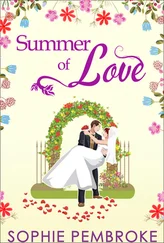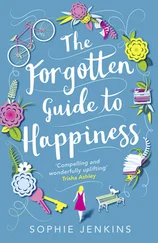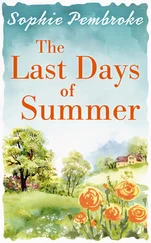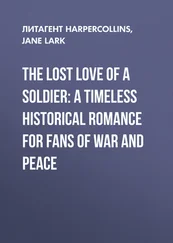Trollope logged his life in grids. Targets met or missed, days of idleness or productivity. Late one night he writes to Field, asking her to meet him at Niagara Falls, the scene of so many Victorian clinches. I’ll come to you , he says, if you can get away .
I look at my book. You don’t need to be a writer or an actor or a lover to dream a second life, an unlived life. You don’t need to have an affair. Every reader does it. In the moment we touch the cover, a second world emerges – another reality with its own rules of space and time. And good novels knock us sideways, even as they take us forwards. With every story we turn the page for, we turn to feel the weight of the unlived life, the other ways we might have gone, or loved, or died. Some are unfaithful readers. A pile of books live next to my side of the bed, gathering dust and regret. For each book that we read, there’s another we don’t begin. And in choosing a tale to write, or relate, there is another we cannot, or do not speak. These small choices carry with them an accompanying sense of resistance, a gravitational pull towards the alternatives we leave behind. The mushrooms we never picked on the picnic we never went on with the person we never met. Most of us are missing something. In so many of our imaginations, there’s a vision of something like a train we missed, a moment in life when we were too late, or too scared to act. Or got stuck in the queue at the sandwich shop. Some of these trains move towards lands we’ve lost, some pause at stations of regret. We see others pass across the landscape of our memory with a sigh of relief. They are the boredoms we escaped, the journeys we avoided. But some are so painful we can only glimpse them at night. They pass at high speed, cornering the edge of dread , taking our breath away.
— 2005 —
I have decided that seeing this is worth recording
John Berger, ‘Understanding a Photograph’
Your studio flat was hard to read. The place was all stripped back and bald, staging a bachelor existence that wasn’t yours. Even the few images that you chose to hang on the walls told a story of things that liked to be single. Black-and-white stills of an old milk jug, a spoon, a silhouette of a man on an empty piazza, pulling a lonely suitcase.
All the clean lines were just an illusion. Hiding that life made sense of course. I get the picture, now I could risk losing the same: a discrete affair keeps things discrete. But your silence got me wanting. You reminded me of one of those plastercast-moulded models I used to make as a child, the ones that fell into two halves. The fascination comes from looking at what’s being cut off. The straight, flat back, deliciously smooth, powder dry.
One afternoon, you left me alone to go to a shoot. Licence to stalk into your office. I looked behind the screen, and opened your desk drawers once to see if I could find any family pictures, then shut them again feeling guiltier than I thought I would. I sat back at your desk, tried out your chair. Imagined the album I would have found. Page after page of grainy squares, bearing witness to the theatre of family. Your role as husband. Your place as father.
There must be a photograph of the small you, walking on a wet promenade, smiling into a lens. I wonder if that’s where it began. When you were taken by the desire to capture things. Sometimes we can pin it down to a single frame. The moment we start to become who we are.
West Finchley to Belsize Park
— 1982 —
They were not railway children to begin with
Edith Nesbit, The Railway Children
My family looked happy enough. From a distance, or from the photos. We lived in an ordinary suburban house, a bit like the one in which Nesbit’s railway children begin their lives at the turn of the twentieth century. Ours was a bit smaller. Inside, there was a big square hall with an emerald green tiled fireplace, and a kitchen with a glass-fronted dresser and an archaic bell system that no longer worked. There were four bedrooms upstairs and a mock balcony, accessible from the main bedroom or by climbing out of a side window, where you could sit on the slatted wooden floor and smoke Camel Lights. We even had French windows, like Nesbit’s children, which hooked back so that you could walk onto a crazily paved patio. The garden was long. It had a gate leading onto the local woods. There were hydrangea bushes and a rockery in the garden. An unsteady sundial with an iron pointer that you could lift up to ambush a colony of ants running in frenzied circles. A gently rotting greenhouse, in which we used to store old furniture. It was a quiet road, the silence broken by the sound of the Tube making its way down the end of the Northern Line, or our next-door neighbour trying to kill squirrels with his air rifle. The house is my earliest memory. The front door in particular.
I remember walking down the path, looking at its pale blue wood (later painted yellow) and jewel-like panels of coloured glass – blue, green and red teardrops against a grid of lead. There were row after row of houses like this in our neighbourhood, all with their own individual take on topiary or pampas grass. Our road was one of the many suburban semi developments of early twentieth-century Metroland, the place with elastic borders, no beginning and no clear end. The architectural critics call these roads joyless. Phoney. A kind of Neverland. Semis like these were, in 1910, bang on trend. Tudorbethan, blackened timber nailed onto the stucco, leadlights in squares or sometimes in diamonds. In the really posh bits of London, architects lovingly built houses along these lines, attempting to capture the idea of human craft in the machine age. The ones in our street were aspirational knock-offs – the rows of pseudo-artisan houses embodied that oddest of ideas: mass-produced individuality. All suburban semis are alike, but each suburban semi is alike in its own way.
Our road was a cul-de-sac. Bag End. Traffic calmed, there was nowhere to go. If you went back the way you came, further up the junction, onto the main road, there was the North Finchley cinema complex, and Brent Cross Shopping Centre, and the open road to Little Chef. And holidays. The North Circ, and Neasden and David Lloyd Sports Centre and multiplex cinemas. Homebase and B&Q. Smooth and bland. A place that brings with it a sort of atrophy of body and mind, a numbing alikeness. This is what J. G. Ballard called the real England . And with it, he writes, comes a boredom that can only be relieved by some sort of violent act; by taking your mail-order Kalashnikov into the nearest supermarket and letting rip .
A century ago, Edith Nesbit had a similar, if less scary, response to Metroland. As a ritual, each evening, she would put aside her drafts of novels and make a series of models of factories and suburban houses out of brown paper. She’d then take them out to her back garden, and set them on fire. It’s little wonder that Nesbit soon has her railway children leave their villa, engineering the plot so that they are forced to take a cottage in the country.
Finchley in Nesbit’s day was an omnibus ride from town, up through Swiss Cottage and Golders Green. A strange mixture of city and countryside, famous for its compost heaps and Barham’s model dairy farm. Visitors on the omnibus would continue through Temple Fortune for their day in the country, on the edge of the city. Overlooking the presence of Simms Motor Units, they would head for the idyll on Regent’s Park Road, where they could view the rows of pedigree Express dairy cows, admire the silver bottle tops and have a scone in the adjoining tearooms. It was a stop-gap. A commuter village. From Tally Ho Corner, you could take the omnibus direct to Marylebone, or pick up the train on a cross route from Finsbury Park to Edgware. But Finchley didn’t join the London Underground for years. Perhaps it makes sense that the man who designed the Tube map was off the map, at least when he first drew it. When he died, nobody even knew it was his idea. Harry Beck lived just around the corner from me – a dweller in nowhere.
Читать дальше












